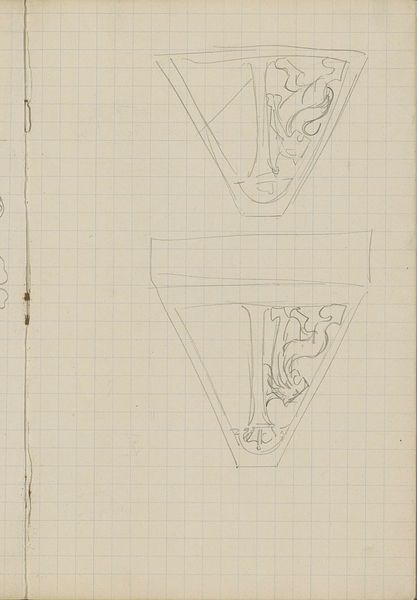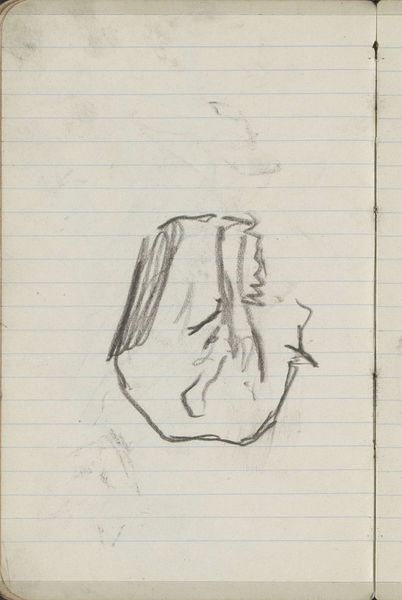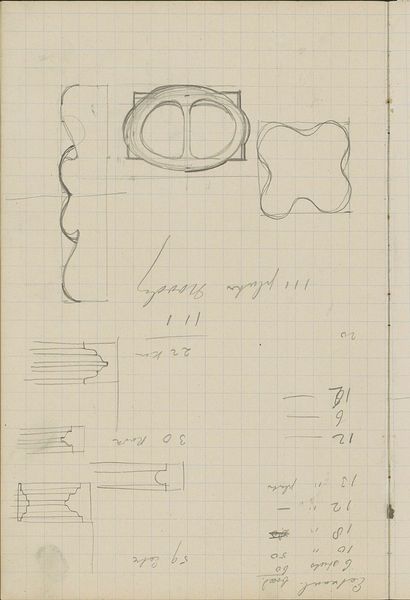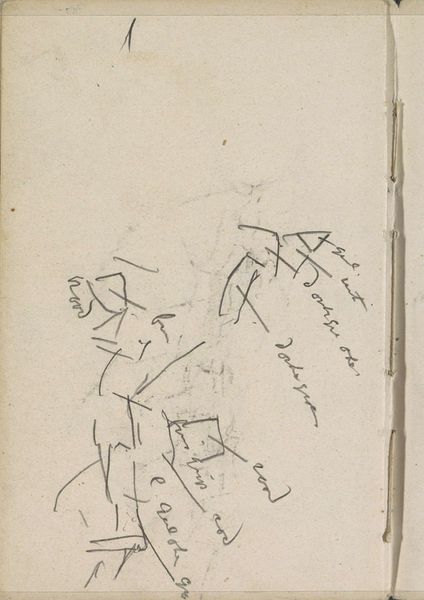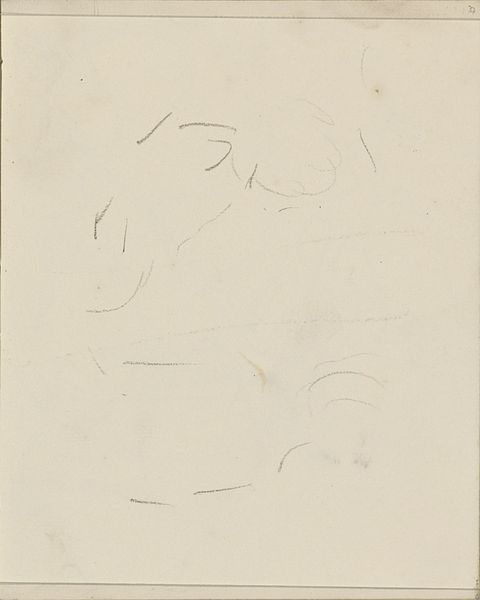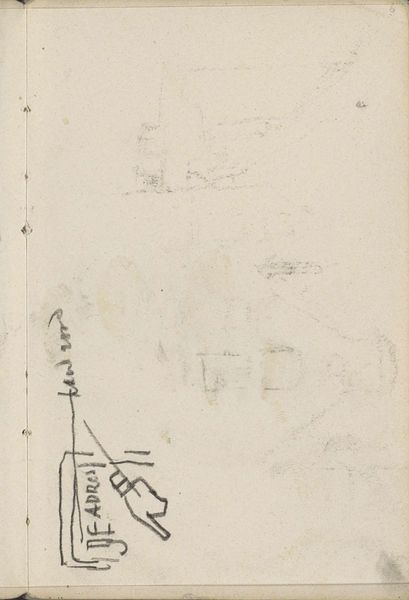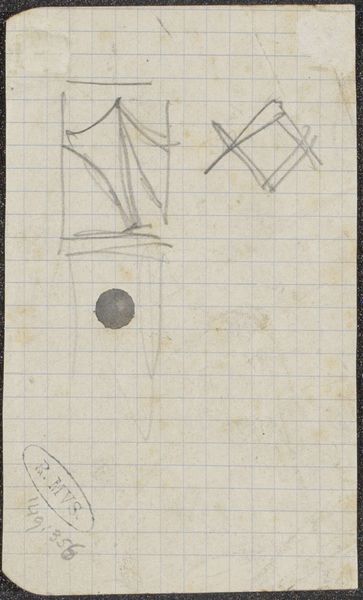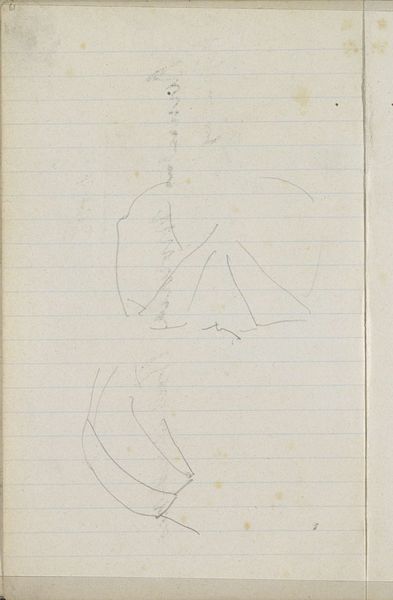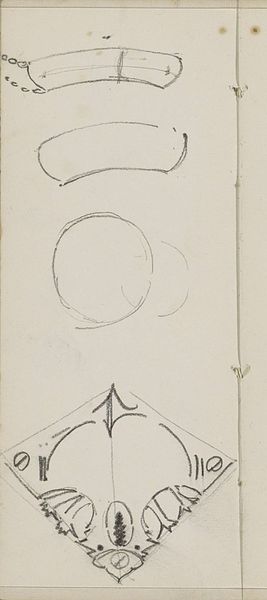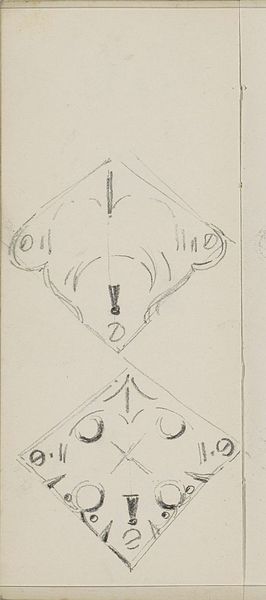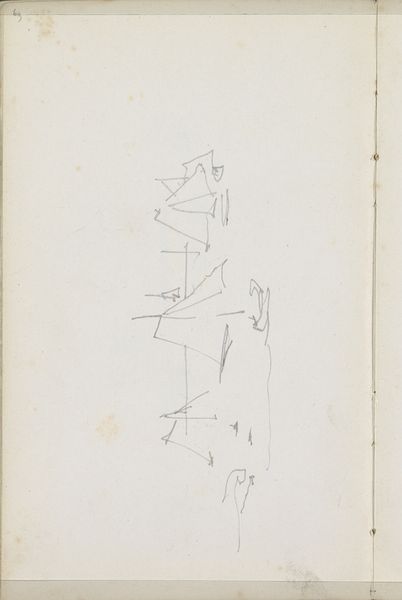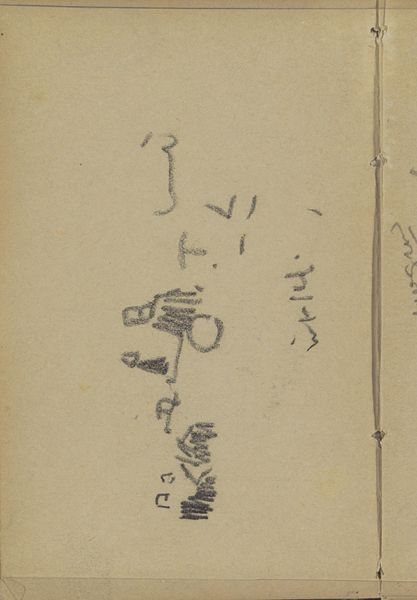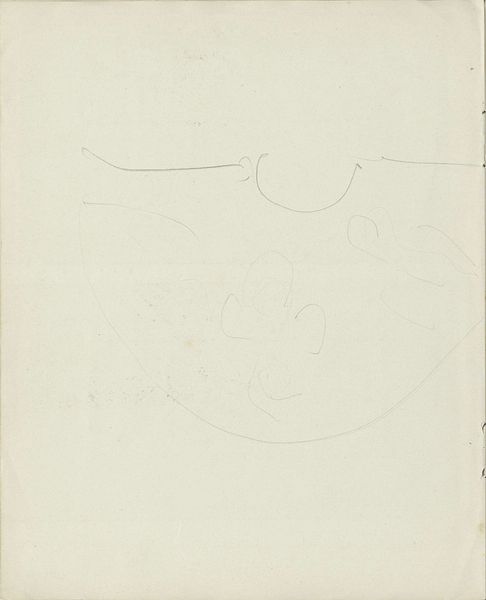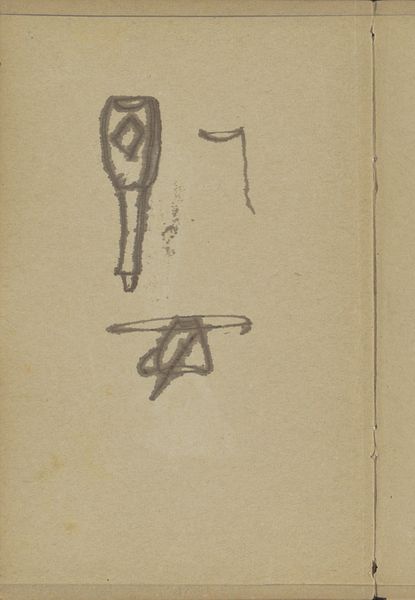
drawing, paper, ink
#
drawing
#
hand-lettering
#
incomplete sketchy
#
hand drawn type
#
hand lettering
#
paper
#
form
#
personal sketchbook
#
ink
#
hand-drawn typeface
#
ink colored
#
line
#
sketchbook drawing
#
sketchbook art
#
initial sketch
Dimensions: height 164 mm, width 100 mm
Copyright: Rijks Museum: Open Domain
Editor: Here we have Gerrit Willem Dijsselhof's "Ornamenten," created between 1876 and 1924, a drawing in ink on paper. It reminds me of a page torn from an architect's notebook. What do you make of it? Curator: This piece invites us to consider the politics of design itself. Dijsselhof was working during a period of immense social upheaval and evolving notions of craftsmanship. Are these truly ornaments, or are they placeholders for something more functional, perhaps even a critique of functionality itself? Consider how "ornamentation" has historically been gendered and racialized, often dismissed as frivolous in contrast to "serious" work. Editor: That's interesting. I hadn't thought of it that way. It does seem unfinished, a study rather than a final work. Curator: Exactly! It begs the question: what labor, whose labor, makes something "finished?" During Dijsselhof's time, ideas circulated that linked artistic labor to moral uplift. But what about the invisible labor that supported artistic creation -- the labor of women, people of color, and the working class? Are these “ornaments” beautiful and sublime because of labor exploitation? The incomplete quality speaks to these broader contexts, to the conditions under which art is created. Editor: So, you're saying we need to think about the social context in which Dijsselhof was working and what "ornament" meant then. I learned so much about thinking beyond the artwork. Curator: Precisely. Question everything – especially the assumed meanings. Now you understand.
Comments
No comments
Be the first to comment and join the conversation on the ultimate creative platform.
